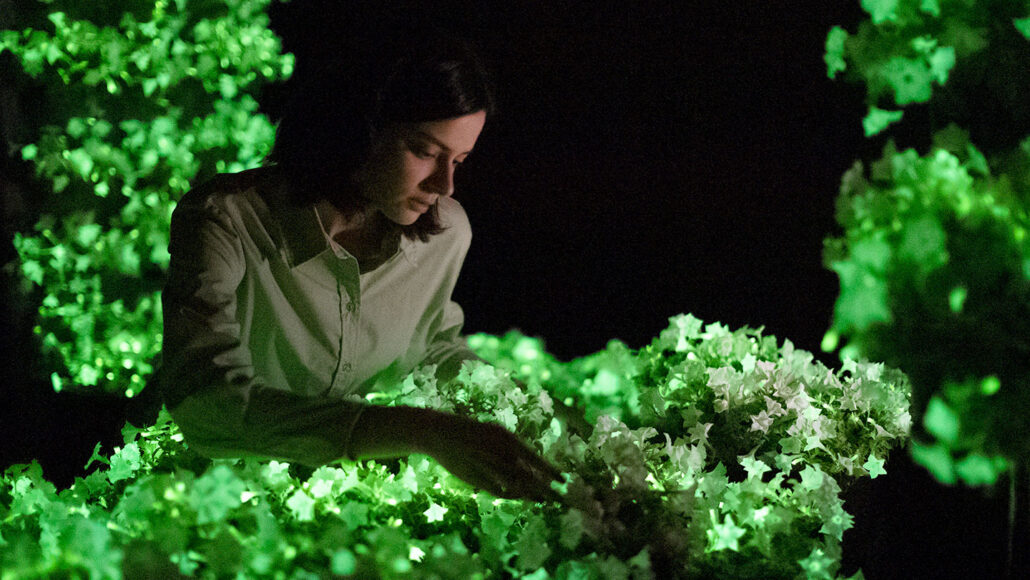Questions for ‘Bionic plants and electric algae may usher in a greener future’

These green leaves are not illuminated by lights. Their glow comes from within. This glow-in-the-dark trait is part of their DNA, due to some fancy bioengineering. The goal: Make tomorrow’s technology more in tune with nature.
K. Wood/Light Bio
Share this:
- Share via email (Opens in new window) Email
- Click to share on Facebook (Opens in new window) Facebook
- Click to share on X (Opens in new window) X
- Click to share on Pinterest (Opens in new window) Pinterest
- Click to share on Reddit (Opens in new window) Reddit
- Share to Google Classroom (Opens in new window) Google Classroom
- Click to print (Opens in new window) Print
To accompany ‘Bionic plants and electric algae may usher in a greener future’
SCIENCE
Before Reading:
- What does it mean to say you’re “working with” someone instead of “working against” them? Consider the relationship between humans and the natural world. Do you think this relationship is currently better described as working with or against one another? Explain your answer.
- The word “well-being” refers to feeling comfortable, physically or emotionally. Consider what roles plants play in your day-to-day life. To what extent do you think plants contribute to people’s physical well-being? What about emotional well-being? Explain your answers.
During Reading:
- What inspired Bhutan’s leaders to reach out to Michael Strano?
- What gas do plants pull from the air to carry out photosynthesis?
- For how many billions of years do scientists believe photosynthesis has sustained living things on Earth?
- What is luciferin? What did Strano’s team make using luciferin?
- Who is Tshering Tobgay? When Tobgay describes Bhutan as “carbon negative,” what does he mean?
- Keith Wood and Michael Strano both work to create glowing plants in their labs, but they use different approaches. How does Wood’s approach differ from Strano’s?
- What organism enables the LIQUID3 bioreactor to clean polluted air? What do these organisms have in common with plants?
- Why would it be a problem if dead or overgrown algae from the LIQUID3 reactors was allowed to rot?
- How can “sunlight overload” become a problem for plants and blue-green algae? How did Jenny Zhang and her team turn this problem to their advantage?
- What does it mean to say that people take a “centralized” approach to power management?
After Reading:
- Why do you think people developed a centralized approach to power management? Imagine we wanted to change our approach to power management to a decentralized system, more like trees in a forest. Describe how one of the technologies in this story might take us a step closer to such an achievement. Beyond the technology described in this story, what tools or technologies are available to us now that might help bring about such a change?
- Imagine you built a city from scratch. You designed this city’s power management system in a traditional, centralized approach many years ago. But now, you want to change to a decentralized energy generation and management system. You know that you must overcome many challenges to make this change. Do you think your most significant challenges will stem from problems related to developing new technology, or problems associated with replacing existing technology? Explain your answer.